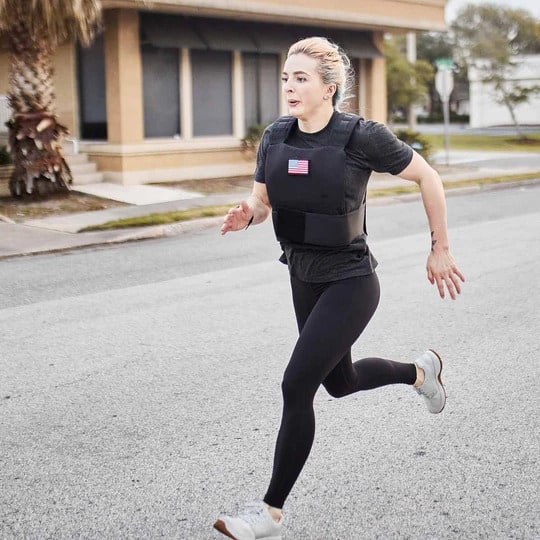A new research study[1] shows that sprint interval training for twelve weeks enhances cardiometabolic health indicators, the same as doing classic endurance training regardless of a five-fold lower exercise volume and time commitment. Regular exercise generally benefits overall well-being and helps prevent and treat many chronic diseases, including type 2 diabetes. For instance, endurance exercise training improves cardiorespiratory fitness, generates skeletal muscle remodeling towards a more oxidative phenotype, and fosters favorable changes in insulin sensitivity.

What was the Goal of the Research Study?
Despite the connection between low amounts of physical activity and increased risk of many chronic diseases, the prevalence of physical idleness is higher than that of all other modifiable risk factors. Lack of time is one of the most common barriers why most people don’t exercise. The need for developing more time-efficient yet equally effective exercise strategies should be given importance.
Sprint interval training (SIT) is defined by brief intermittent bursts of relatively intense exercise divided by periods of low-intensity activity for recovery. Wingate Tests are the commonly studied SIT model that includes four to six 30-second “all-out” cycling efforts performed per session, interspersed by four minutes of recovery. Studies that have directly compared several weeks of Wingate-based SIT to moderate-intensity continuous training (MICT) have reported the same improvements in cardiorespiratory fitness, skeletal muscle oxidative capacity, and insulin sensitivity based on oral glucose tolerance tests.
The goal of the current study was to compare the effects of 12 weeks of SIT or MICT on insulin sensitivity and other cardiometabolic health indicators, including cardiorespiratory fitness and skeletal muscle mitochondrial content in sedentary men. The two protocols have different exercise volumes and time commitments. SIT involved one minute of intense intermittent exercise within a 10-minute session, while MICT consisted of 50 minutes of moderate-intensity continuous exercise.

What were the Research Methods of the Study?
Twenty-seven inactive men took part in the study and were generally considered inactive based on an International Physical Activity Questionnaire score of less than 600 MET minutes per week. They were matched for age, BMI, and VO2peak and assigned to SIT, MICT or CTL. Participants performed a cumulative VO2peak test on an electronically-braked cycle ergometer. After a 1-minute warm-up at 50 W, the resistance was increased by 1 W every 2 seconds until fatigue or when the pedal cadence fell below 50 rpm. Participants underwent a body composition test and a 50-minute intravenous glucose tolerance test (IVGTT) after five days and following a 10-hour overnight fast.
Blood samples (8ml) were acquired from the “sampling arm” every ten minutes for 50 minutes post-infusion. Plasma and serum were separated by centrifugation and stored at -80°C. The training involved a lead-in phase, where one session was completed in week one and two sessions in week 2. The exercise was performed three times per week after that, but not in week 7, where two sessions were replaced with a “mid-training assessment” for VO2peak and arterial ultrasound imaging instead. The SIT protocol consisted of 3×20-second ‘all-out’ cycling efforts against 0.05kg/kg body mass, divided by two minutes of low-intensity cycling (50W).
A two-minute warm-up and three-minute cool-down at 50W were included, resulting in 10- and 50-minute sessions for SIT and MICT, respectively. The MICT protocol consisted of 45 minutes of endless cycling at ~70% HRmax. Participants repeated the body composition test and IVGTT 72 hours after the training conclusion. A resting muscle biopsy was obtained 24 hours later or 96 hours post-training. A VO2peak test was also conducted four days after the biopsy and one week after training. All procedures were similar to baseline testing.
What were the Results and Conclusions of the Findings?
After the training, the researchers found that 12 weeks of SIT in formerly inactive men improved insulin sensitivity, cardiorespiratory fitness, and skeletal muscle mitochondrial content to the same extent as MICT, despite a five-fold lower exercise volume and training time commitment. SIT involved one minute of intense intermittent exercise within a time commitment of 10 minutes per session, while MICT consisted of 50 minutes of nonstop exercise at an average pace. A few earlier studies have documented the same improvements in skeletal muscle remodeling and markers of health status after SIT and MICT lasting up to six weeks.
The current study and work by others emphasize the efficacy of SIT for improving indices of cardiometabolic health. Still, the possible effectiveness of interval training in its diverse forms and influence on public health stays controversial. In a current study done by Jung et al, participants noted a greater preference to engage in a high-intensity intermittent exercise protocol than continuous moderate or vigorous-intensity exercise. The interval protocol involved 20 minutes of alternating 60-second periods of training at 100% and 20% Wpeak, while the continuous protocols involved activity at 40% Wpeak for 40 minutes or 80% Wpeak for 20 minutes.
Other authors’ work indicated that commitment to a four-week high-intensity interval training program, evaluated by self-report in free-living situations, was greater than a moderate-intensity continuous exercise in people with prediabetes. These findings emphasize the potential utility of intense interval training as an alternative exercise strategy that could support exercise commitment. Still, longer and more extensive studies are warranted in this respect.

Recommendations for Fitness Trainees Based on the Research
A SIT protocol involving three minutes of strenuous intermittent exercise per week, within a total time commitment of 30 minutes, is as effective as 150 minutes per week of moderate-intensity continuous training for increasing insulin sensitivity, cardiorespiratory fitness and skeletal muscle mitochondrial content in formerly inactive men. While SIT is a powerful motivation to elicit physiological adaptations, this type of exercise demands a very high level of motivation and is not fit for everyone.
Reference
1. “Twelve Weeks of Sprint Interval Training Improves Indices of Cardiometabolic Health Similar to Traditional Endurance Training despite a Five-Fold Lower Exercise Volume and Time Commitment”

Tim is the founder of FitAtMidlife.com – an avid gym rat for 30+ years, he’s a reviewer of many, many shoes – and founder of the Speed Bag Gathering – the world’s only gathering of speed bag punching enthusiasts. See more gym reviews at Tim’s YouTube channel.
